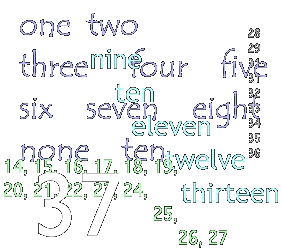 For the last few days I've had houseguests in town visiting* - hence the lack of attention I've been paying to blogging. But I bundled them back into the car for the trip back to Iowa this afternoon, so in light of the fact that i was a little light today, I present...the brain scrambler!!!!
For the last few days I've had houseguests in town visiting* - hence the lack of attention I've been paying to blogging. But I bundled them back into the car for the trip back to Iowa this afternoon, so in light of the fact that i was a little light today, I present...the brain scrambler!!!!Pretty neat huh? I have to admit it took me a while to figure out how it works. Can *you* figure it out? I'll post the answer during lunch tomorrow in the comments. Yay fun!
* For example, apparently they saw a guy get hit by a CTA bus this afternoon on Michigan Ave, but I'll get to that story tomorrow, it's late and I'm sleepy.
Comments
See it.
But I didn't know that this worked for other bases. I just noticed that all the multiples of 9 always matched the symbol that came up. Thanks for the math lesson Theo!
You're always subtracting off the 1's column, so it doesn't matter. 34 - 4 = 30. 45 - 5 = 40.
So what you're really doing is subtracting the N's (where N is your base) column from a number that is a multiple of the base (in other words, a number that ends in 0).
In fact, you'll always end up with:
n*N - n
where "n" is the N's column and N is the base. Factor it out...
n*(N-1)
And there you have it... The result is always a multiple of N-1.
Bada-bing. The key was in subtracting off the 1's column to get a number that ends in 0. Woot.